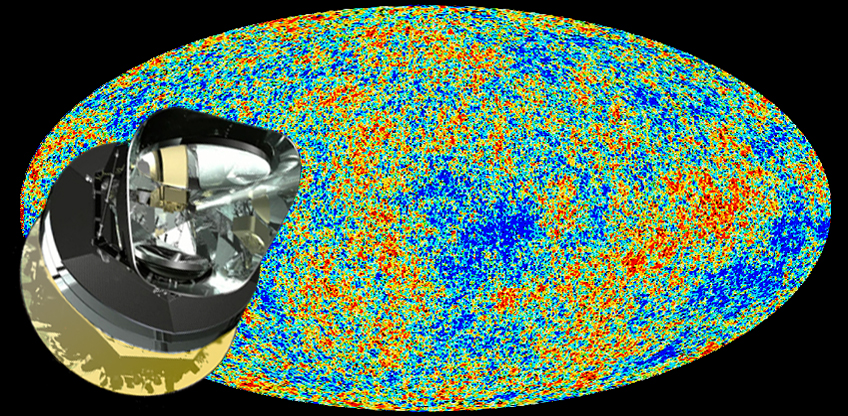
The Planck mission has yielded the most detailed map yet of the cosmic microwave background radiation, from which crucial cosmological parameters have been recalculated.
At a March 21 NASA telephone news conference, scientists from the U.S. team participating in the European Space Agency’s Planck mission to map the cosmic microwave background (CMB) discussed Planck’s first cosmological results, including some surprising news. For one thing, the universe is 13.82 billion years old, a hundred million years older than previously thought, because it’s expanding more slowly.
Even more surprising is that the universe contains significantly less dark energy and significantly more matter – both dark and ordinary – than indicated by the prior CMB surveyor, NASA’s WMAP satellite. According to Planck’s results, dark energy accounts for only 68.3 percent of the mass-energy of the universe, down from WMAP’s 71.4 percent, while dark matter is up 26.8 percent from WMAP’s 24. And while the ordinary stuff you and I are made of and can see or touch is still a small part of the whole, at least we’ve climbed back up to 4.9 percent (pretty close to one-twentieth, eh?) from the miserable 4.6 percent we could claim until recently.
Planck’s initial results are based on its first 15 and a half months of repeated observations of a billion points in the whole sky, adding up to trillions of observations of faint variations in the temperature of the CMB. The CMB is primordial light freed when the early universe cooled enough for photons and particles of matter to disentangle themselves and go their separate ways; the temperature variations themselves are evidence of pressure waves that moved through the universe when it was still in a quasi-liquid state. They thus represent regions of greater or lesser density, known as baryon acoustic oscillations (BAO), which have carried over into the large-scale structure of the universe today.
“This data will form the cornerstone of our cosmological model for decades to come and spur new directions in research,” says Martin White of Berkeley Lab’s Physics Division and the UC Berkeley Department of Physics, a theorist with extensive experience of the cosmic microwave background’s seminal role in the evolution of large-scale structure. An expert in BAO, White has been a Planck scientist since early in the mission’s history and was a member of the telephone conference group that discussed the results, along with NASA’s director of astrophysics Paul Hertz, U.S. Planck Team leader Charles Lawrence and Planck scientist Krzysztof Gorski, both of NASA’s Jet Propulsion Laboratory, and Marc Kamionkowski, a professor of physics and astronomy at Johns Hopkins University.
Berkeley Lab plays a deep role in Planck’s success, beginning with the 1992 proposal by Berkeley Lab’s George Smoot and then-visiting Italian scientists Nazzareno Mandolesi and Marco Bersanelli to build a CMB survey satellite dubbed COBRAS. Later combined with a complementary proposal called SAMBA, COBRAS/SAMBA eventually became Planck. All three men remain members of the Planck collaboration.
Crucial contributions to Planck’s analysis have also been made by Julian Borrill, the U.S. Planck Team’s computational systems architect, who led a Berkeley Lab group in creating the thousands of simulations run at NERSC upon which the accuracy of the analysis depended.
More about Planck’s first cosmological results can be found at http://www.jpl.nasa.gov/news/news.php?release=2013-109. More about NERSC’s role is at http://www.nersc.gov/news-publications/news/science-news/2013/planck-results/.